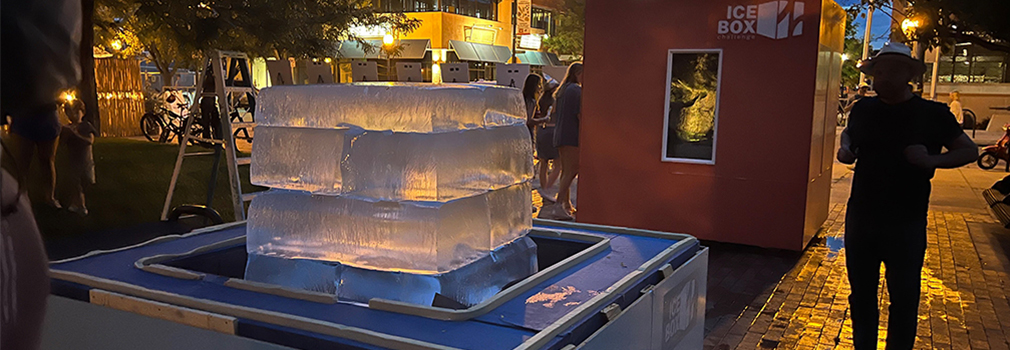Operational Excellence
September 7, 2023
A ton of ice meets summer heat: See the power of energy efficiency in real time
Xcel Energy-sponsored Passive House Network Icebox Challenge puts building standards to the test

On a hot summer day in Colorado, two shed-like structures of the same size and shape are each filled with 2,000 pounds of ice. Cameras and other monitoring devices are set up to track what happens inside over the course of two weeks. At the end of that run, attendees will see which box is better equipped to keep the ice from melting away completely – the one built to local building standards or the one built to international Passive House Network standards.
Each year, the Passive House Network Icebox Challenge, sponsored by Xcel Energy, offers an interactive, highly visual way to emphasize the importance of energy efficiency measures. Thus far, the Passive House structure has crushed the competition at installations in both Fort Collins and Louisville, Colorado. At the Fort Collins reveal on July 15, the box built to local code saw a 65.9% loss of its ice block, compared to a 34.7% loss inside the Passive House box. The contrast was even more stark at the Louisville reveal: The code box saw a 60% loss while the ice inside the Passive House box melted by only 25%.
Among the highest building standards in the world, the international Passive House Standard focuses on insulating buildings to reduce cooling and heating loads and in turn reduces energy usage and carbon emissions. Passive House Network homes are built with high-performance windows and doors with solar protection to moderate the heat from the sun and specialized building materials that create an airtight seal to eliminate leaks and drafts. They run almost exclusively on electricity and use energy-efficient appliances and building materials to reduce electric load and carbon emissions.
“It’s the best tool to drive carbon emission reductions proportional to what the climate crisis demands,” the Passive House Network website explains. “And while that’s true, Passive House criteria also prioritizes human comfort and health. Passive House methods reveal that comfort and healthy living are not luxuries, but are inextricably tied to providing fundamental building performance.”
Highly efficient homes do more than use less energy and help homeowners save on energy bills. Homes built to higher building standards are more comfortable, boasting better indoor air quality, better temperature regulation, less ambient noise and fewer allergens.
Xcel Energy is a proud sponsor of Passive House Network’s Icebox Challenge. We encourage builders to build to Passive House Network standards as part of our goal to achieve zero carbon emissions and drive the clean energy transition.
The final challenge kicks off in Denver on Sept. 9 and lasts through Sept. 23, 2023. For more information, check out Ice Box Challenge - The Passive House Network.
For a look at a previous Passive House Network Icebox Challenge, check out this 2019 video:


